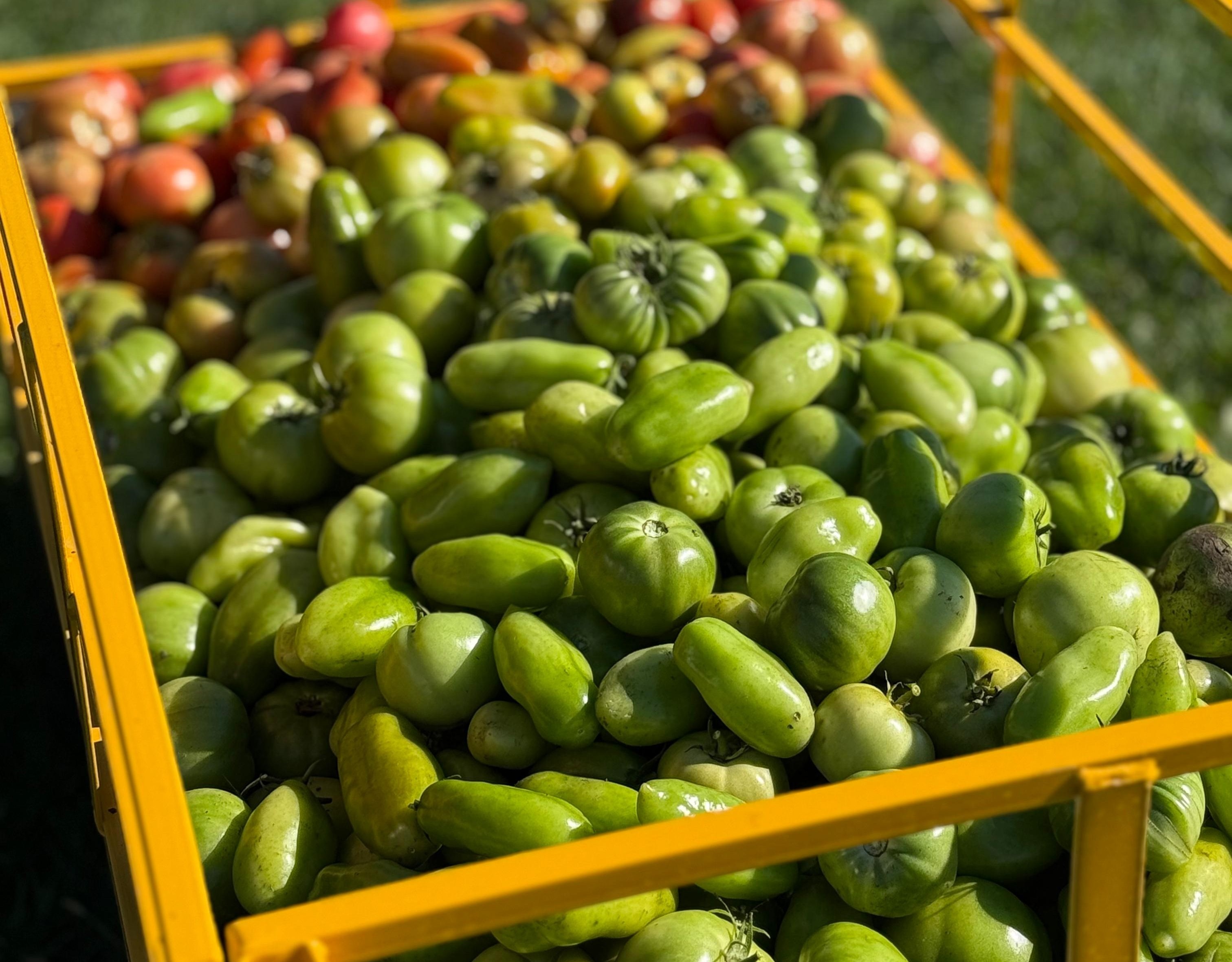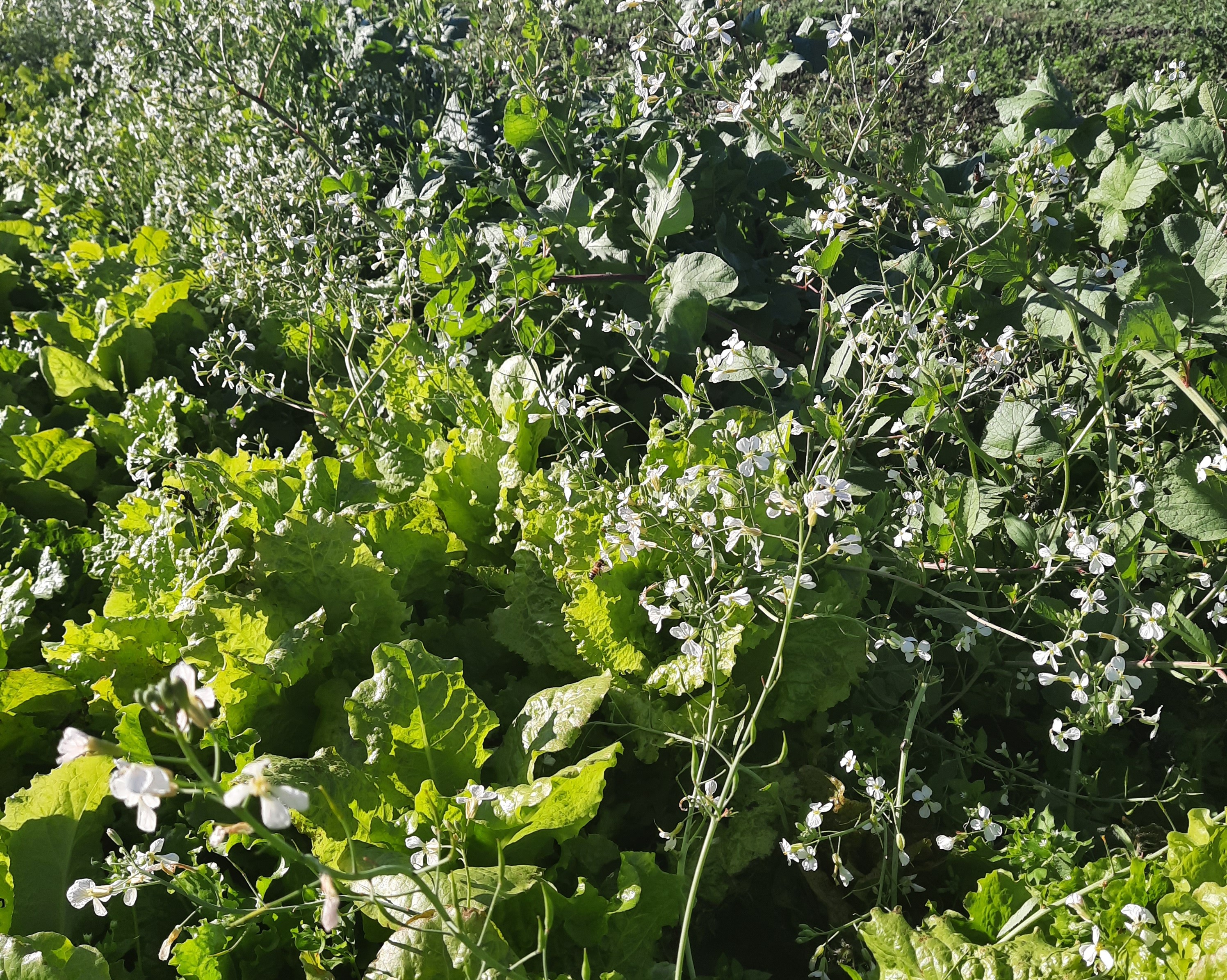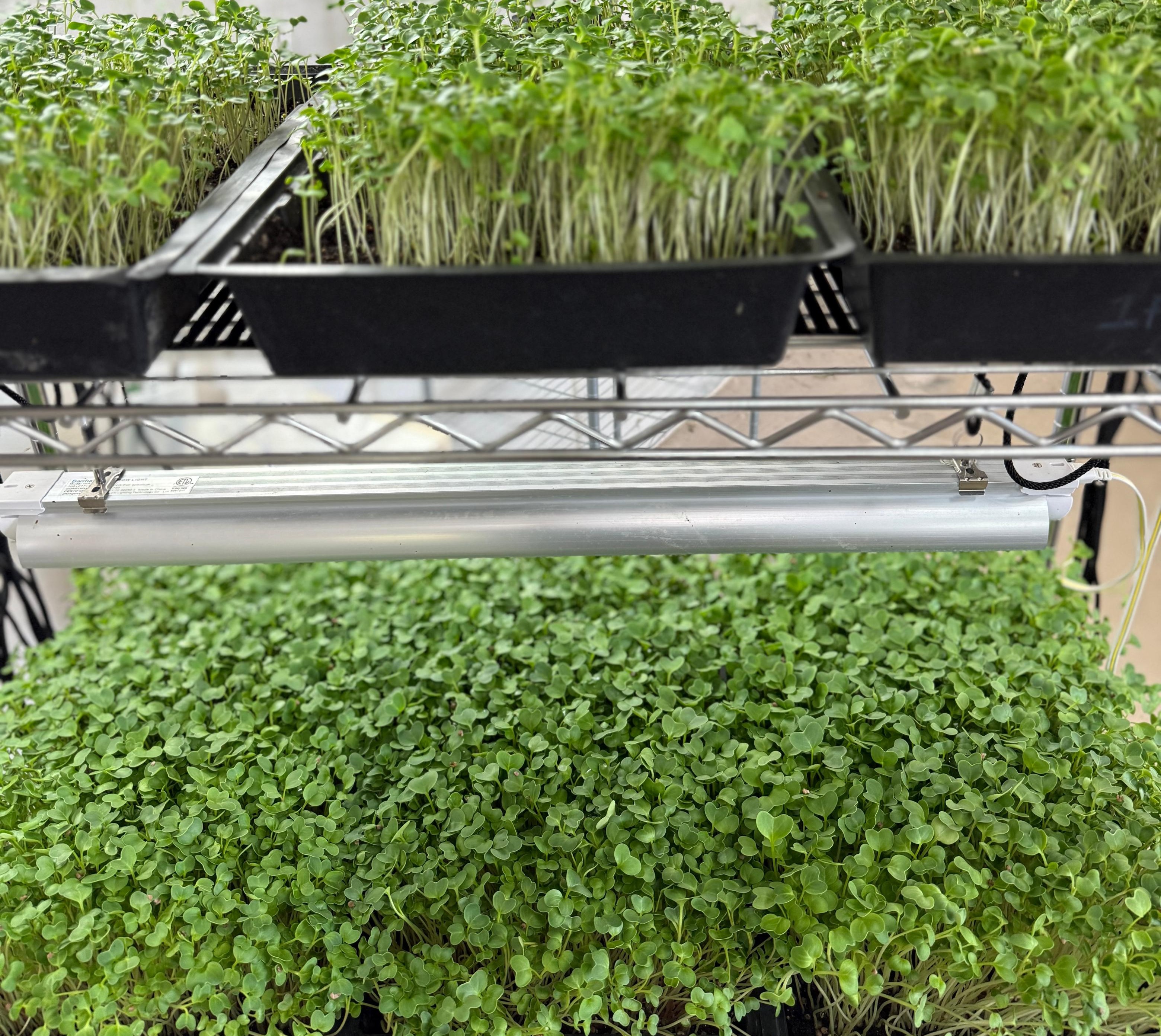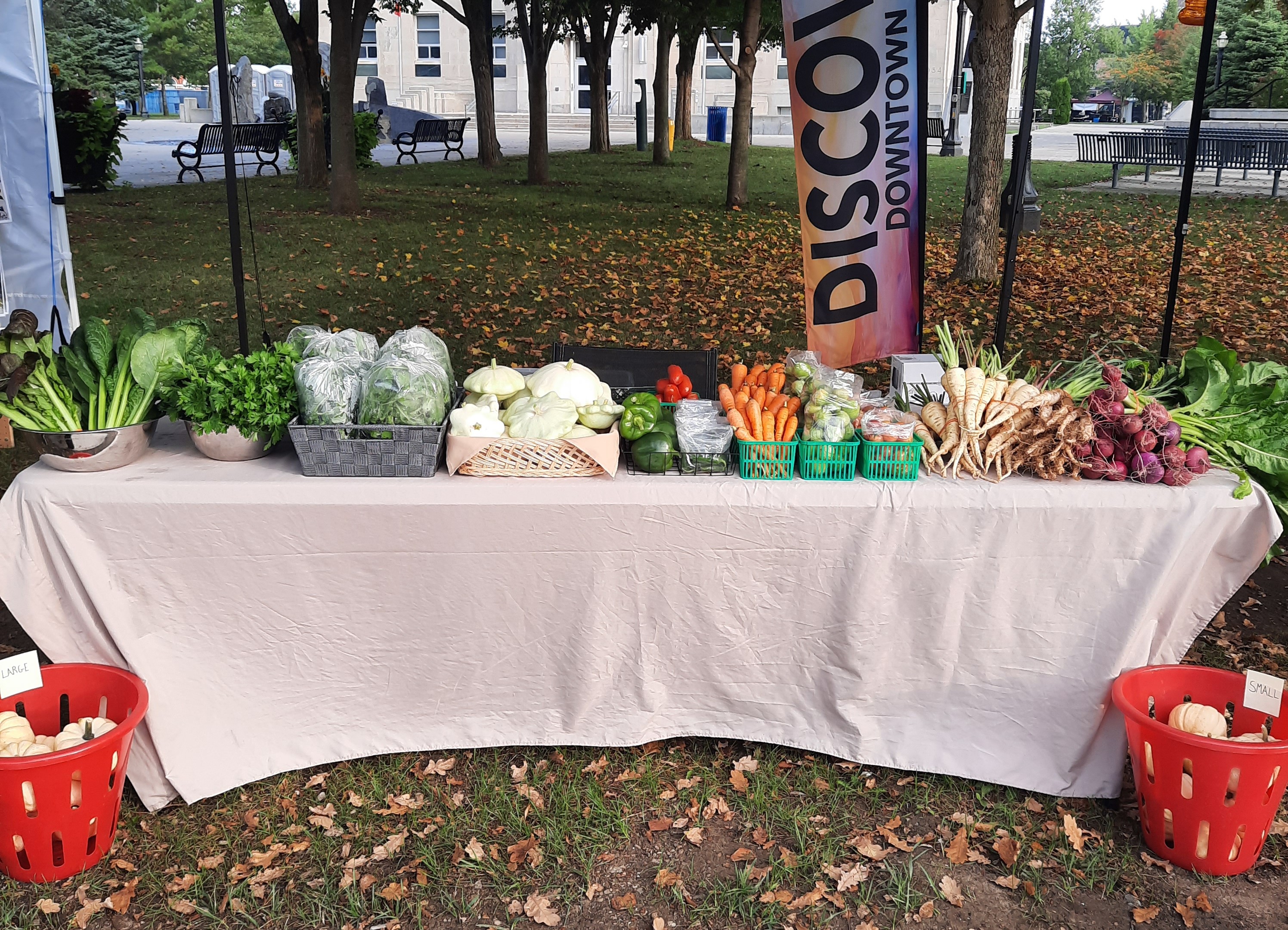The end of October is fast approaching and with it the end of the 2025 gardening season here in Huron County, Ontario. After a couple frost warnings and light frosts, last night we had the first hard frost of the fall. Part of me wishes we still had several more warm, sunny months to keep on growing and part of me is ready to cozy up indoors by the fire and start planning for next season!
In past gardening seasons, I’ve used season extension techniques to keep my plants alive and productive as long as possible. In my home garden I’ve managed to keep tomatoes and peppers going well into November and December, just by covering them carefully at night and on cold days. And at the market garden where I used to work, we had hoop houses and a heated greenhouse to keep production going as long as possible. I enjoyed delaying the inevitable and harvesting from still-healthy plants as the warm days became fewer and farther between.
This year being my first year with my own market garden, the end of the season went a bit differently. The last Farmers’ Market was on October 11th; since we are a new operation and the market was our primary sales outlet, this ended most of our sales for the year. What is still growing in the field is now mainly for us, our family, friends, and neighbours. We haven’t yet invested in low tunnels, hoop houses, or greenhouses so our plentiful end of season bounty is available on a limited-time basis only. At the market garden scale, unlike my past home gardens, it doesn’t really make sense to try to save plants without the proper infrastructure. Anticipating incoming frosts, we’ve focused our efforts on harvesting, eating, processing, and storing copious amounts of tomatoes, peppers, and squash. We’ve left the cool-season crops to be harvested as-needed, and we continue to enjoy an all-you-can-eat buffet of lettuce, arugula, various Asian greens, spinach, swiss chard, parsley, carrots, turnips, and radishes.

Aside from harvesting as much as possible, I’m starting to get antsy to get the garden cleaned up and put to bed. Normally I’m somewhat “middle-of-the-road” when it comes to my fall garden cleanup philosophy. I like to leave some plant debris behind (from disease-free plants) to add nutrients back to the soil, to help prevent erosion, and to provide spots for beneficial insects to overwinter. Some larger plants I might cut off at the base and remove, leaving only the roots behind to decompose, while smaller and more cold-hardy plants might be left as-is until spring. However in my new garden this year I experienced more pest and disease pressure than I have in the past, so I’m trying to clear away plant debris (…and weeds…) more thoroughly in hopes of freezing out some of the pests over winter.
To that end, I started pulling up and cutting off plants early this year- before they were even showing signs of cold damage- knowing that there was a lot of work to do and mother nature could throw me a curveball (a snowball?) sooner than expected. I have to admit this was a bit of a tough task, since the plants still looked healthy and the bees were still enjoying the flowers. I’m heartened though to have had such a productive season, and I know there will be a great sense of satisfaction to get the field cleaned up before the snow flies. Plus I still have several beds of radishes and arugula in flower that I’m leaving until the last possible moment so the bees can still enjoy them…

The process of putting the garden to bed in the fall tends to put me in a reflective mood. I’m thankful for the year, the harvests, and for all the things that went well. This year I was proud of getting started with my dream of having my own market garden- especially since we just moved and had many unknowns to deal with. I was also proud of successfully growing some new crops for the first time such as salsify, and I also had great success growing microgreens which I’d found in the past to be a bit of a learning curve.

While the main focus at this time of year is harvesting and winding down the garden, there is one fall planting task I always look forward to: planting garlic for next year. It’s refreshing to be able to plant something new while most other crops are being cleared out, and it gets me excited and looking ahead to the upcoming season. I’m already thinking about which crops to focus on, how to dial in my garden plan, and how to expand our capacity. While I am looking forward to getting my plan for next season together, and partaking in more indoor garden-related activities like saving seeds and growing microgreens, for now I’m still savoring every sunny day I get to enjoy out in the garden. ☀️
